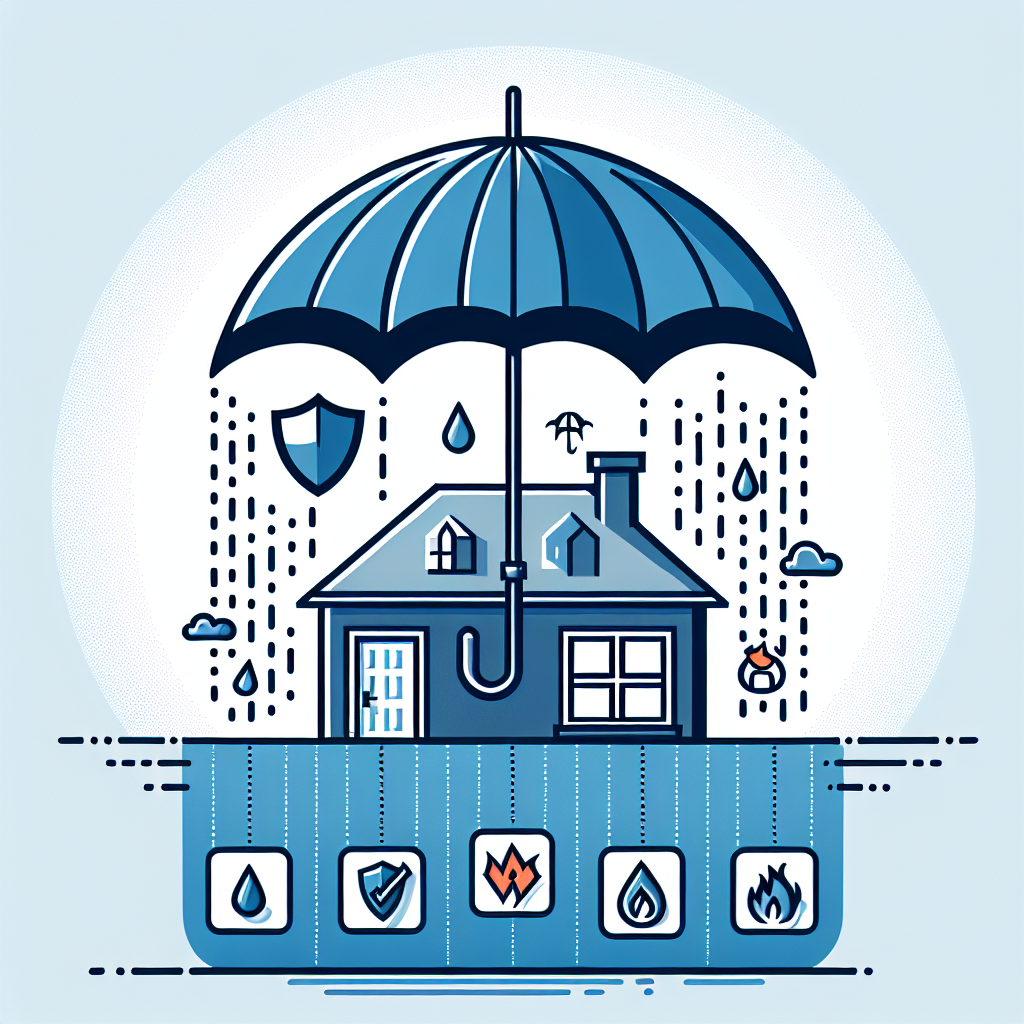Filed under Home Insurance on
Essential Guide to Home Insurance Coverage Explained

Home insurance is an essential aspect of safeguarding one of your most significant investments—your home. Understanding the intricacies of home insurance coverage can provide you with peace of mind, ensuring that you're prepared for the unexpected. In this comprehensive guide, we will explore the essentials of home insurance coverage, breaking down key components to help you make informed decisions.
What is Home Insurance?
Home insurance, also known as homeowner's insurance, is a policy that protects your home and personal belongings from damage or loss. It's designed to cover various risks, including natural disasters, theft, and accidents. Understanding the basic structure of home insurance policies is crucial to ensuring that you have the protection you need.
Why is Home Insurance Important?
Home insurance is vital because it offers financial protection against unexpected events. Without it, you could face significant out-of-pocket expenses if your home or belongings are damaged. Additionally, most mortgage lenders require home insurance as a condition for financing.
Key Components of Home Insurance Coverage
Home insurance coverage typically includes several essential components, each serving a specific purpose:
- Dwelling Coverage: This protects the physical structure of your home, including walls, roof, and foundation. It pays for repairs or reconstruction if your home is damaged by covered perils.
- Personal Property Coverage: This part of the policy covers personal belongings such as furniture, electronics, and clothing. It provides compensation for theft or damage to these items.
- Liability Coverage: Liability coverage protects you if someone is injured on your property. It covers legal fees and medical expenses up to the policy limits.
- Additional Living Expenses (ALE): If your home becomes uninhabitable due to a covered event, ALE covers the costs of temporary living arrangements.
- Other Structures Coverage: This covers structures not directly attached to your home, like sheds or detached garages.
Understanding Policy Limits and Deductibles
Each component of your home insurance has limits, specifying the maximum amount the insurer will pay for a covered event. Deductibles are the amounts you'll need to pay out of pocket before your insurance kicks in. Choosing appropriate limits and deductibles is crucial to balance your coverage needs and budget.
Factors Affecting Home Insurance Premiums
Several factors influence the cost of home insurance premiums:
- Location: Areas prone to natural disasters or high crime rates may have higher premiums.
- Home Characteristics: The age, size, and construction materials of your home can impact the cost of insurance.
- Claims History: A history of frequent claims can lead to higher premiums.
- Credit Score: Insurers often consider credit scores, as they may correlate with the likelihood of filing claims.
- Policy Options: The coverage limits and deductible amounts you choose will affect your premium.
Tips for Reducing Your Home Insurance Costs
Reducing your home insurance costs doesn't mean compromising on coverage. Here are some strategies:
- Bundle Your Policies: Many insurers offer discounts if you purchase multiple policies, such as home and auto insurance, from them.
- Increase Your Deductible: Opting for a higher deductible can lower your premium, but ensure you can afford the out-of-pocket expense if needed.
- Enhance Home Security: Installing security systems and smoke detectors can reduce risks, leading to premium discounts.
- Maintain a Good Credit Score: A higher credit score can result in lower insurance costs.
- Shop Around: Comparing quotes from different insurers can help you find the best deal without sacrificing coverage.
Common Exclusions in Home Insurance Policies
Understanding what your home insurance policy doesn't cover is just as important as knowing what it does. Common exclusions include:
- Flooding: Most home insurance policies do not cover flood damage. Separate flood insurance is usually required.
- Earthquakes: Earthquake coverage is typically excluded but can be added as an endorsement.
- Maintenance Issues: Damage resulting from neglect or lack of maintenance is usually not covered.
- Acts of War: Damage from war or nuclear hazards is generally excluded from standard policies.
Customizing Your Home Insurance Policy
To ensure comprehensive protection, consider endorsements or additional policies to cover gaps. For instance, if you live in a flood-prone area, purchasing flood insurance is advisable.
Current Industry Trends in Home Insurance
The home insurance industry is evolving with technological advancements and changing environmental conditions. Here are some notable trends:
- Use of Technology: Insurers are incorporating technology like AI and IoT devices to assess risk and offer personalized policies.
- Environmental Considerations: With climate change causing more frequent natural disasters, insurers are adapting their offerings to cover these risks better.
- Customer-Centric Models: There's a growing emphasis on customer service and flexible policies to meet diverse needs.
Staying informed about these trends can help you make smarter decisions regarding your home insurance coverage.
Expert Opinions on Home Insurance
Industry experts emphasize the importance of regularly reviewing your home insurance policy. As life circumstances change, such as renovations, purchasing valuable items, or moving to a new location, your insurance needs may also change. Consulting with a qualified insurance agent can help tailor your policy to your current situations.
Conclusion
Understanding home insurance coverage is essential for protecting your home and assets. By familiarizing yourself with the key components, potential exclusions, and ways to optimize your policy, you can ensure comprehensive coverage that meets your needs. As the industry evolves, staying informed and proactive will help you navigate any changes, ensuring your home is always protected.
Regularly reviewing and adjusting your policy ensures that you remain adequately covered in the face of life’s uncertainties. Working with a knowledgeable agent can make this process straightforward and stress-free.
With this essential guide, you now have the foundation to make informed decisions about your home insurance coverage. Protect your most valuable asset with confidence and ensure peace of mind for you and your family.





